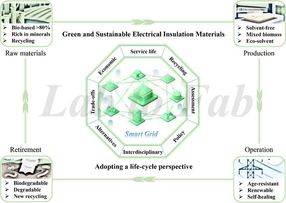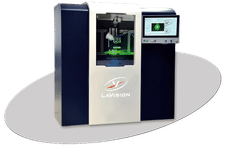Playing with Light and Color
Assemblies of blue-green iridium and red europium complexes undergo energy transfer and emit white light
Advertisement
Complexes of the rare earth element (lanthanide) europium have the ability to emit red light over a longer time span after excitation by, for example, light of a suitable wavelength or the energy of a prior redox reaction. This luminescence makes them interesting candidates for applications in biological test systems or as sensors. In addition, they can also be used in functional units that emit light. Because europium complexes do not demonstrate any noteworthy absorption in the visible portion of the light spectrum, between about 400 and 700 nm, other strongly absorbing molecules must be used as light-gathering antennas to achieve sufficient photoluminescence under these conditions. These antennas must absorb the excitation light and transfer the energy it contains to the europium complex, which can then emit.
A team of researchers from the Netherlands and Russia has now more closely examined the use of a transition metal complex as the light gathering component for the photoluminescence of europium. They combined an iridium(III) phenylpyridine complex with a europium(III) terpyridine chelate. When the iridium compound alone is excited by light with a wavelength of 400 nm, it emits blue-green light (wavelengths between 460 and 491 nm). The europium complex emits red light with a 615 nm wavelength when stimulated by 350 nm light. When both components are mixed in the right ratio, they form a stable adduct made of one europium and two iridium units. This assembly begins to glow white after irradiation with light that has a wavelength of 400 nm, which is only absorbed by the iridium component.
The iridium component is thus clearly capable of transferring a portion of the energy it absorbs to the europium complex so that it too is stimulated to emit its characteristic light. The blue-green iridium radiation and the red europium radiation then mix, resulting in light that appears white.
Other news from the department science
These products might interest you
Most read news
More news from our other portals
See the theme worlds for related content
Topic world Sensor technology
Sensor technology has revolutionized the chemical industry by providing accurate, timely and reliable data across a wide range of processes. From monitoring critical parameters in production lines to early detection of potential malfunctions or hazards, sensors are the silent sentinels that ensure quality, efficiency and safety.

Topic world Sensor technology
Sensor technology has revolutionized the chemical industry by providing accurate, timely and reliable data across a wide range of processes. From monitoring critical parameters in production lines to early detection of potential malfunctions or hazards, sensors are the silent sentinels that ensure quality, efficiency and safety.






























































